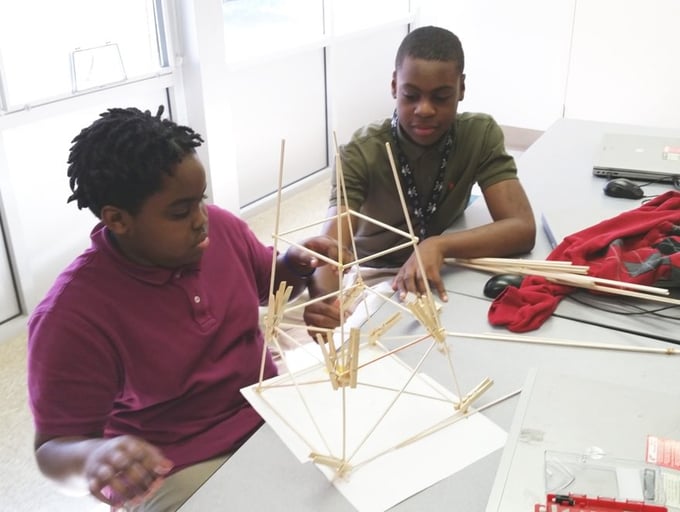Matt Skovran is a teacher at South View Upper Elementary in Danville, Illinois. Matt loves American history and architecture, is a Chicago Cubs fan, and enjoys running half marathons.
After demonstrating a new Autodesk drawing technique, I began monitoring students' work on the new technique. As I was making my rounds, one student asked me, “Mr. Skovran, why did you decide to become a teacher?”
As I thought about her question, I reflected on how I thought my American history teacher was the coolest when I was a student, and one day in class during my junior year, I thought, “I could see myself doing the same.” This was a moment of great nostalgia for me, but not the most exciting answer. I asked her to show me how she drew her turbine part and said I'd share the story of how I became a teacher afterward.
As she moved her mouse and began clicking different features, manipulating and modifying the blade's components, her demeanor shifted from tentative to confident – and that confidence radiated as bright as a lightbulb. As she finished up with the part, I commended her work and asked if she would be willing to walk a fellow student through the process.
“Me?” she said, hesitantly.
“Yes, you, you can do it," I said. "Just take him through the same steps you just showed me, and you’ll be fine.”
She walked over to her classmate's desk, and the two started talking. She said, "Yeah, I struggled with this too, but keep at it and you’ll get it.” Within minutes, I witnessed the transferring of knowledge from teacher to student, student back to teacher, then student to student. It was awesome!
I came back over to her desk and said, “You know why I became a teacher? The lightbulb. Your entire face lights up like a lightbulb, glowing with excitement, confidence, and knowledge. It's as if your face is telling everyone around you, ‘I got this, and nothing can stop me’. That 'lightbulb' is why I became a teacher.”
Every day, I enjoy observing students walking into my classroom, excited to see what we can design, draw, build, and tear apart and how we can work together to problem solve, collaborate, and research. It's great to hear students say, "Mr. Skovran, what are we building next?" with genuine smiles and enthusiasm.
This will be my 17th year in the classroom and my third year as a PLTW instructor. PLTW’s curriculum and philosophy has transformed the classroom setting from teacher-centered to one that is driven by the students. I enjoyed my time as an American history and general science teacher and there will always be a place in my heart for history as well as balancing chemical equations, but the amount of one-on-one instructional time I get with students because of PLTW's student-driven, activity-, project-, problem-based curriculum is at unfathomable level.
Before teaching PLTW, I always had the philosophy "You have a better chance of getting a problem right by trying, rather than letting the fear of failure get to you and not trying at all.” PLTW’s curriculum ignites and keeps lit that intrinsic engine of our students. I appreciate that it shows kids it's OK to fail or struggle. Despite every effort made, sometimes whatever you've done won't work, and you have to figure it out. Students are figuring out why Thomas Edison said, “I didn’t fail. I just found 10,000 ways that won’t work.”
Not all of our students will become architects, biochemists, or nanotechnologists. Some will go on to work in service jobs and as school teachers. However, no matter if our students becomes a future automotive engineer developing the next innovative fuel-efficient vehicle or a parent driving their children to three separate activity practices, heading to the grocery store, and still finding time to cook dinner and sit down with their children to read, PLTW classrooms are answering the old question “When are we ever going to use this?”
Students, you'll be problem solving for the rest of your lives. Shine on light!
PLTW’s blog is intended to serve as a forum for ideas and perspectives from across our network. The opinions expressed are those of each guest author.


